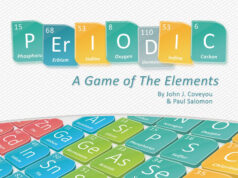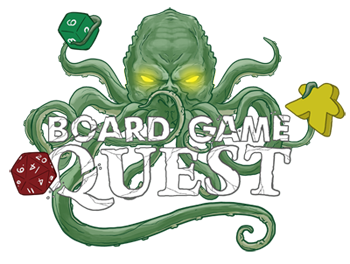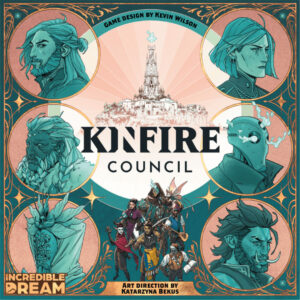 Kinfire: a magical flame that keeps the darkness at bay. Council: a group elected to manage the affairs of the city through legislation and advising.
Kinfire: a magical flame that keeps the darkness at bay. Council: a group elected to manage the affairs of the city through legislation and advising.
Incredible Dream Studios are on a roll. With the release of Kinfire Council, they have added another entry into their Kinfire board game universe. This includes releases in the “Delve” and “Chronicles” Kinfire lines, each tackling a specific genre from the industry. “Council” brings worker placement to the forefront. Designer Kevin Wilson is probably working on new lines that include trick-taking, area control, dice drafting, and auctions. Soon, Kinfire will be all we see. All we know.
Gameplay Overview:
In Kinfire Council, players take on the role of a Seeker and their available workforce to pass decrees, combat the infiltration of shadowy threats, and build lighthouses on the outskirts to keep the city within the glow of the ancient light. The central board features three tiers of available worker locations, and each round features a new lighthouse to build. Players also have a limited supply of influence tokens that they can use toward certain actions.
Round phases are structured around the light available to us.
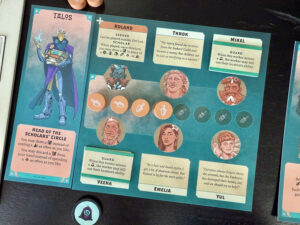
Sun’s Rise – Each round begins by drawing two decrees that are available to vote for during play. These can aid the city by way of law, order, and election, or if not passed, crisis. Decrees provide a wrinkle to game rules as well as a constant crisis to be mindful of during play.
Also, during this phase is the unleashing of the cult. Cultist tokens are numbered to match city locations. They are drawn, increase threat tokens on matching cards (more on these later), and block worker placement spaces. They must be arrested to be removed.
Day’s Light – Players may now dispatch their Seeker as well as their workers on a turn-by-turn basis. Workers can go to available city locations to gain or trade resources, upgrade their abilities, cast votes, and several other options. The second and third tiers of the city do require a tax to enter. Adjacent cultists can be arrested if a worker has this ability. These also become a resource for players to use in certain locations.
Beyond the city, Seekers can also travel to combat threat cards that slowly accumulate threat tokens. If their threshold is ever met, bad things happen within the city, at the lighthouses, or even with the players. Threats provide a great way to score points when thwarted.
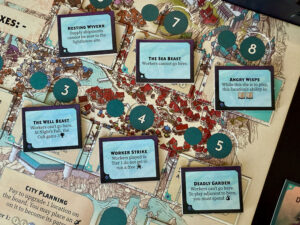
Players can also perform an errand after each placement, which allows them to send resources to help build the lighthouse or to send resources to the city to contribute to the ever-growing city’s needs.
Night’s Fall – End-of-round upkeep requires resolving several areas: City Needs, Decrees, and the Cult. Players receive points for contributing to the city’s needs and add a cultist to the next round draw for each that is unmet. The most votes on a decree determines which passes. And any cultists still on the board continue to add threat tokens to their matching cards.
Then the lighthouse is built. First, the lighthouse takes damage that accumulated during play, and the cultists score points based on this. Then, players collect points based on the final lighthouse level and their contributions. If this were the final lighthouse (there are five rounds in total), then the game ends.
Players attempt to score the most points. At the end of the game, if the cult has the most points, then any player who chose to become a cult conspirator wins instead. And if the cult beats all scores with no conspirator, the cult wins. A wrinkle during the final scoring relates to hidden threats that accumulate over time. These are kept hidden from all players and provide a significant number of points to the cult before final scores are evaluated.
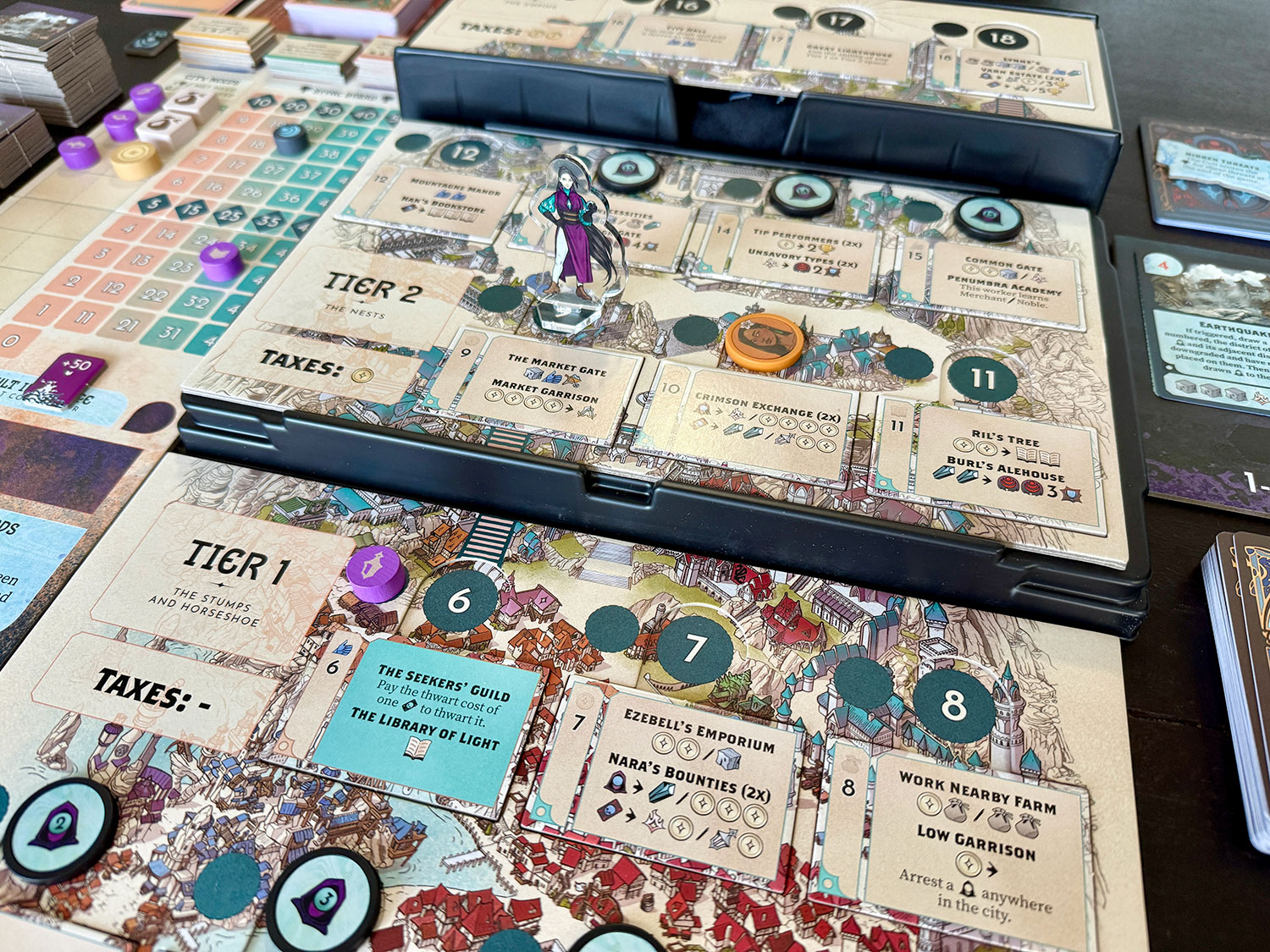
Game Experience:
Let’s start with the obvious. Kinfire Council was created with a lot of attention to detail, amazing illustration, and an attempt to fill in a city that players must manage. The game features plastic trays to stack each tier of the city, showcasing each rung of society that corresponds to ever-increasing tax penalties for visiting. Seekers are acrylic standees, the cultists are plastic chits, and everything has a very tactile and awe-inspiring look.
As for gameplay, there is a lot to dig into. It is easy to spot the Lords of Waterdeep influence based on the evolving city and outside threats. But it’s the addition of shared spaces that sets Council apart. Players are each seeking their own points, but they are also navigating decrees that may or may not benefit them, outside threats that may impact their infrastructure, and a common goal of building the lighthouse and removing cultists.
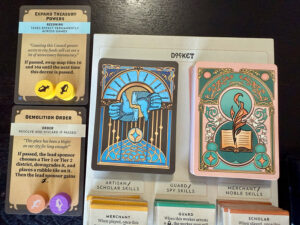
Council can be tight. Players are always trying to eke out resources and are being pulled in many directions. The fact that they start with four of a potential eight influence tokens also requires a strategy for how to utilize these during a round. Influence can assist with city needs, voting, lighthouse errands, and building upgrades. It can also be permanently spent toward the cult conspirator option.
Each Seeker comes with its own upgraded worker role, and players select councilor abilities to provide asymmetric benefits. These range widely and are all quite fun to attempt. They also provide a direction that may assist with the constant pull to tackle everything. You’re good at this one thing. Do it for the city. For your colleagues. And for the points it awards you.
The threat system is also well developed. The constant bombardment of cultists and the onslaught of new threat cards provide a shared incentive for all players. Not all threat cards are the same, though, and some may not be as impactful as others. But a cultist in your way on the board is a significant hindrance that must be tackled. And thankfully, the game incentivizes you to gain cultist tokens, as they can be traded in for great resources along the way.

Worker abilities can be upgraded to provide significant benefits, such as arresting cultists or using coin in place of other resources. The city can be reduced to rubble by way of a threat. Locations can be upgraded with resources that provide patron bonuses. And there are even research cards that can be gained that provide a lot of flexibility to your options.
All that said, the one area of the game that does not work well for me is the cult conspirator. It’s a fun idea, a player betrayal when all are needed to keep hope alive. But it takes away from what makes the game shine, which is its shared battle against the darkness. Thankfully, there is an expansion titled Winds of Change that provides not only a cooperative option, but also a solo mode, new cards, and new lighthouses. This works extraordinarily well by injecting a cult decree system that is leaps and bounds better than the conspirator option.
Other aspects that would’ve benefited from some additional tweaking would be the decree system and the sentry tokens. The decrees provide a feeling of being on a council, but they are not always very impactful. And they are a perfect place to incorporate a narrative buy-in via a stacked deck of increasing odds (seeded before play). The threats do some of this, but they are also random and not always impactful. Also, the inclusion of sentry tokens that provide residual points based on certain tasks feels like an afterthought.
Final Thoughts:
Really enjoying my time with Kinfire Council. Worker placement can be a hard system to innovate, and while this improves upon earlier titles in the genre, it also harkens back to their elegance through simplicity. Sure, there is a lot of choice here, but the rules stay out of the way and allow for the world to expand as you play. Shared interaction such as this does shine best when in a co-op setting, and I do recommend the expansion Winds of Change to play this with the cultist degree cards. This negates the cult conspirator and makes the darkness the enemy for everyone. But even if co-op isn’t your thing, there’s enough here to provide that new wrinkle on worker placement. It’s part of an ever-expanding universe, but wholly its own. If only you could light the Kinfire and assist the city with all its needs. Best of luck to you.
Final Score: 4 stars – Kinfire Council shines a dazzling light on the worker placement genre.
 Hits:
Hits:
• Quality presentation
• Focus on shared interaction
• Unleashing the cult
• Evolving workers and city
Misses:
• Cult Conspirator
• Decree system
• Sentry tokens











